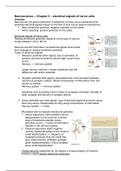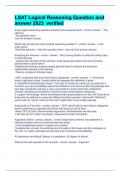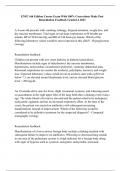Samenvatting
Summary Chapter 2 electrical signals of nerve cells
- Vak
- Neurosciences
- Instelling
- Vrije Universiteit Amsterdam (VU)
Orderly and clear summary of chapter 2 "electrical signals of nerve cells" what is discussed during the neuroscience lectures. With this summary you will save a lot of time. I passed this course with a 8,2. Good luck :)
[Meer zien]








